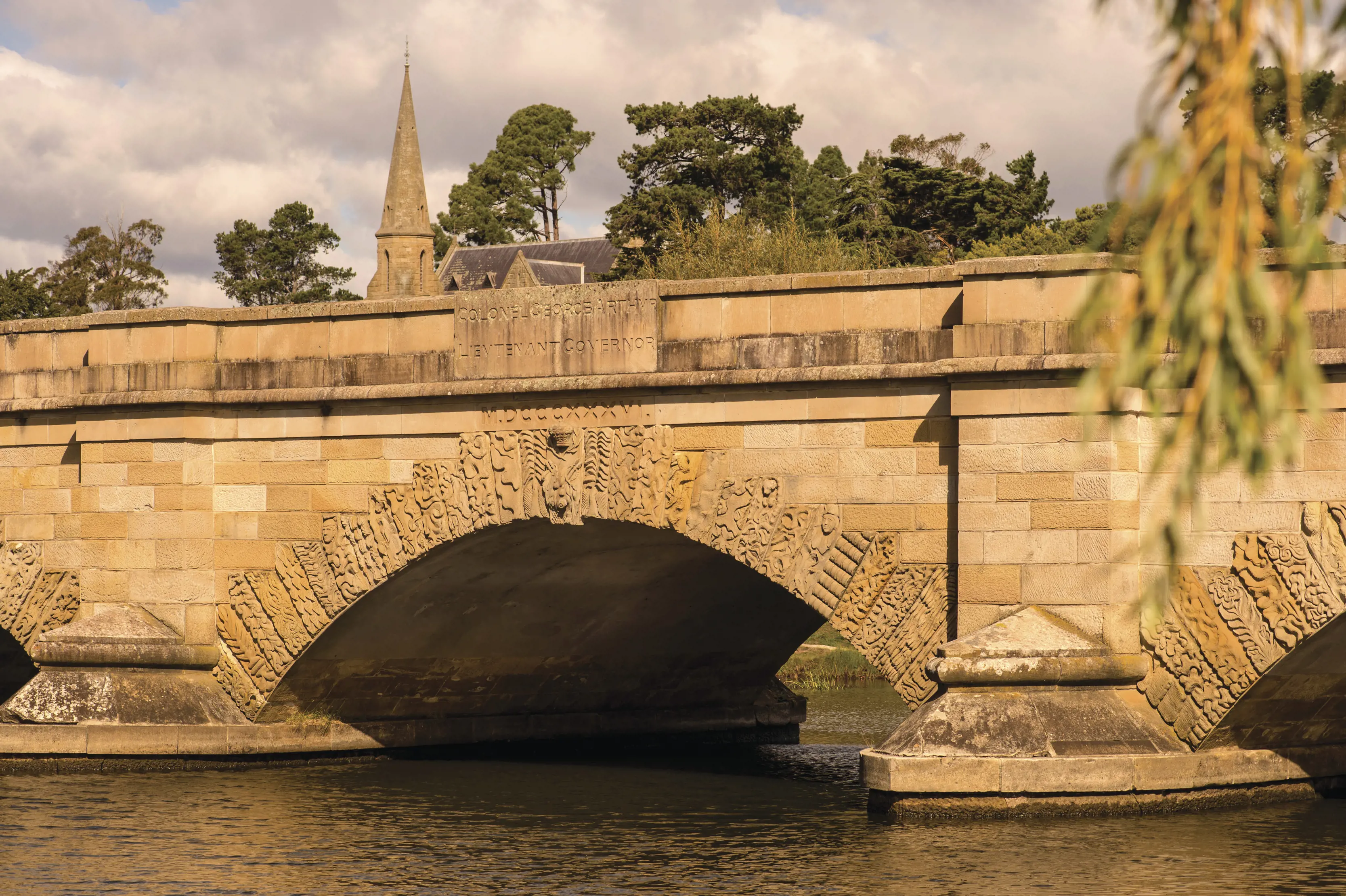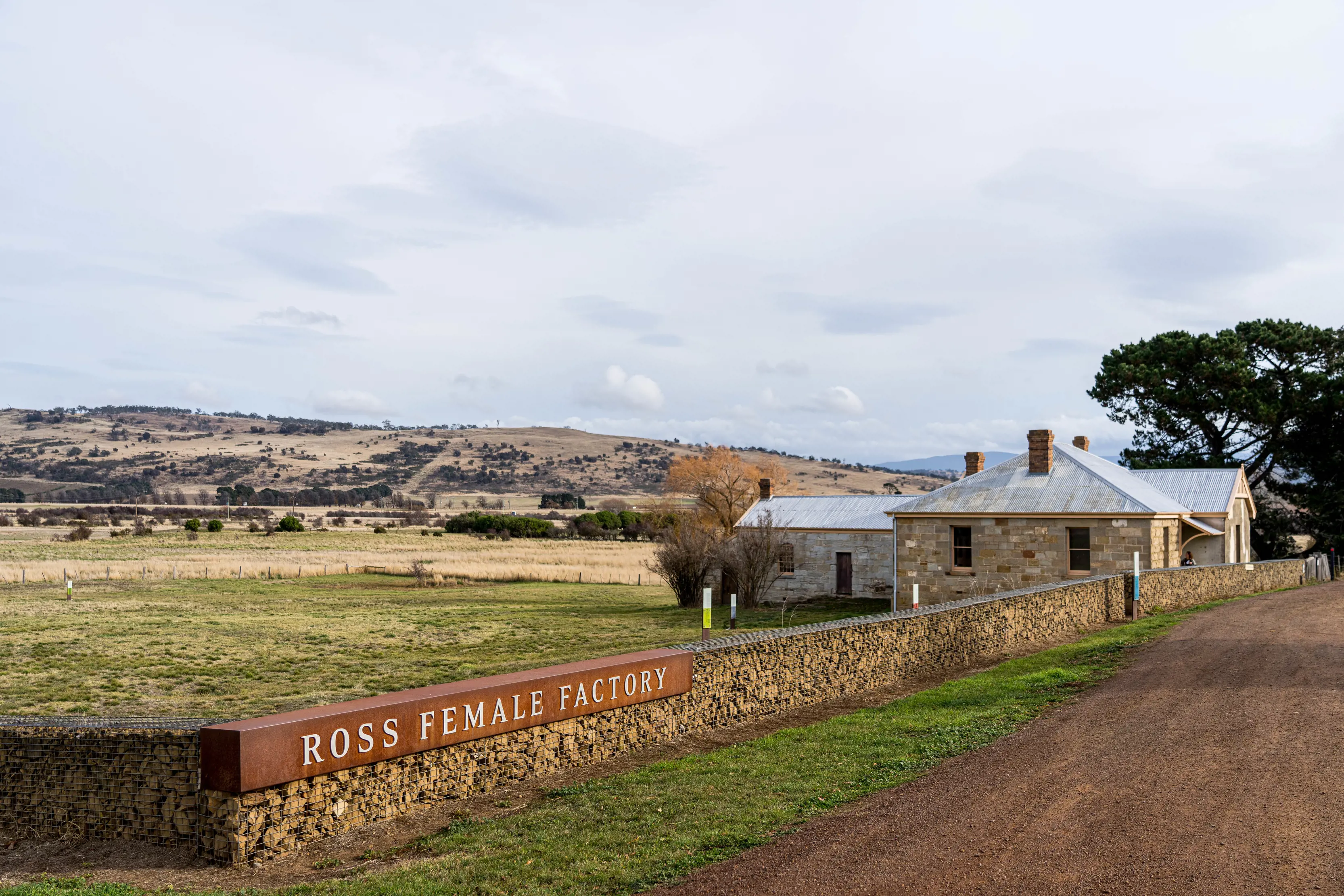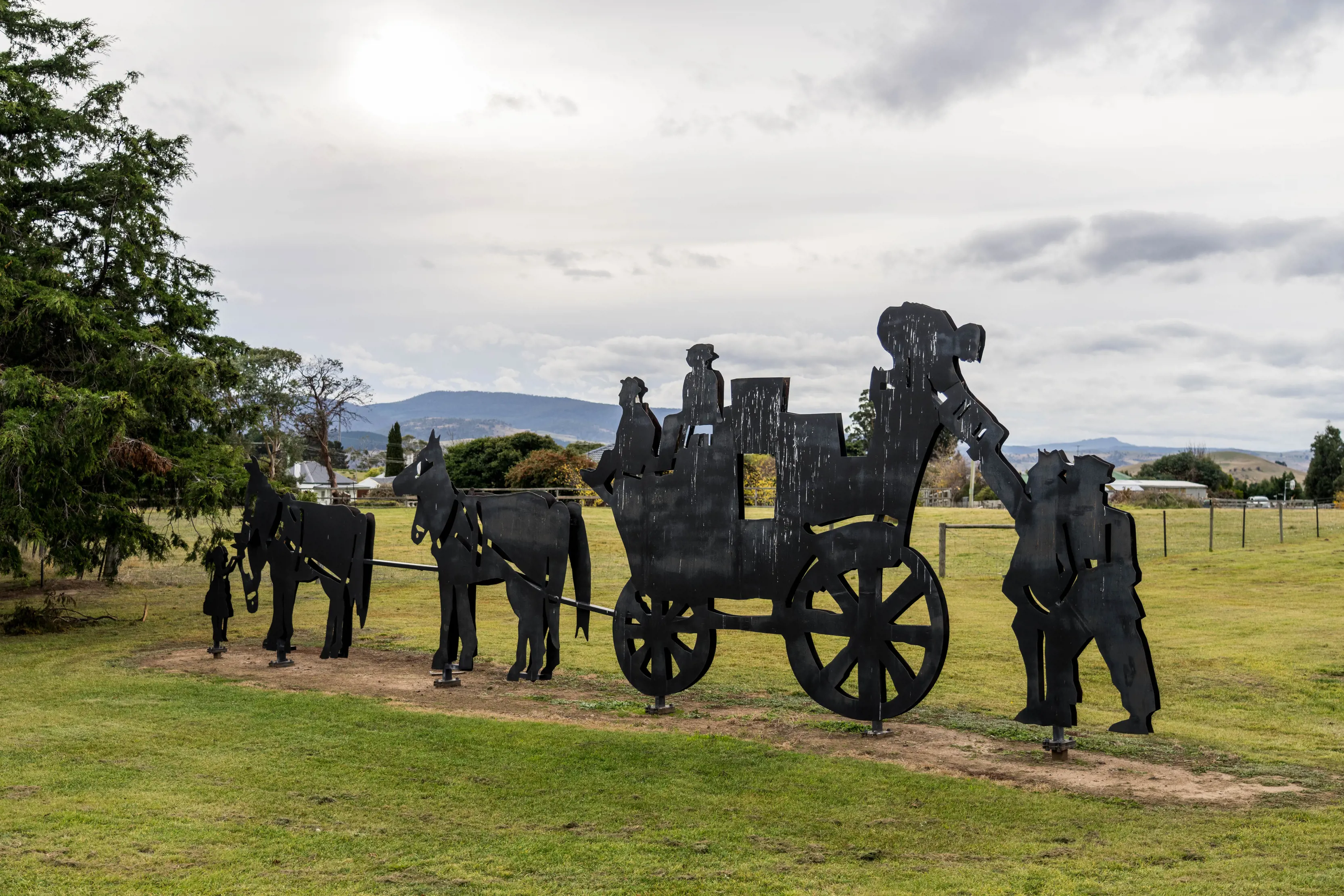
If Tasmania has a “main road” at all, it’s the 176km Midland Highway connecting Hobart and Launceston.
Also known as the Heritage Highway, the road was hacked across the state by convict road gangs in the early 19th century to open up the fledgling colony’s interior. Initially a rough track worn by carts, cattle and sheep, and lined with towns, bridges and inns, it’s grown to become the state’s major thoroughfare.
Travellers can still see remarkable convict-built bridges, towns of golden-hued sandstone, myriad heritage buildings, and a roadside “silhouette trail” of statues depicting colonial-era scenes on their way between the island’s two cities. The drive takes about 2hr 30min, but plan for plenty of detours and exploration.
Historic bridges
Tick off two bridges, both fascinating for different reasons, just 12km apart in the centre of the state. In Campbell Town, admire Red Bridge, which was designed and built by convicts. The brainchild of convict-engineer James Blackburn, it’s Australia’s oldest surviving brick arch bridge, fashioned from 1.5 million red-clay bricks made on site. In neighbouring Ross, take a peek at the 186 carvings adorning the stone Ross Bridge, dating from 1836. Said to be based on real people, the sculptures are so remarkable that their convict creator, Daniel Herbert, won a pardon for his extraordinary work.
Sandstone towns
Oatlands, 85km north of Hobart, features a stunning collection of more than 150 colonial sandstone buildings, the largest cluster of such buildings in Australia. Admire the golden hues of this Georgian townscape by wandering along Campbell Street, past a convict-built courthouse that was regional Tasmania’s only Supreme Court, meaning it could deliver death sentences. A collection of about 40 historic buildings can be explored at Perth, 15km south of Launceston.
Convict sites
At Ross, visit the Ross Female Factory Historic Site, originally built to house convict chain gangs constructing the town’s stone bridge. It was later converted into one of the state’s four female factories, operating as a probation station for female convicts and their babies between 1847 and 1854.
A few kilometres south-west of Perth, just outside the historic town of Longford, is Woolmers Estate, one of Australia’s best-preserved 19th-century homesteads. Farmed by the same family for more than 170 years from 1817, the estate includes the National Rose Garden, significant buildings – such as a convict-built blacksmith’s shop and bakehouse – and artefacts from every period of the estate’s history. The neighbouring estate of Brickendon is an historic working farm where travellers can stay in convict-built cottages or rustic farm cottages. Jointly, the two properties form one of Australia’s 11 World Heritage-listed convict sites.
Connect with nature
Seven kilometres off the highway at Bagdad is Chauncy Vale Wildlife Sanctuary, a 380ha reserve that attracts bushwalkers, birdwatchers and campervanners (with just four available sites). Take a hike to reach Browns Caves or Eve’s Bath, a series of sculpted rock pools.


